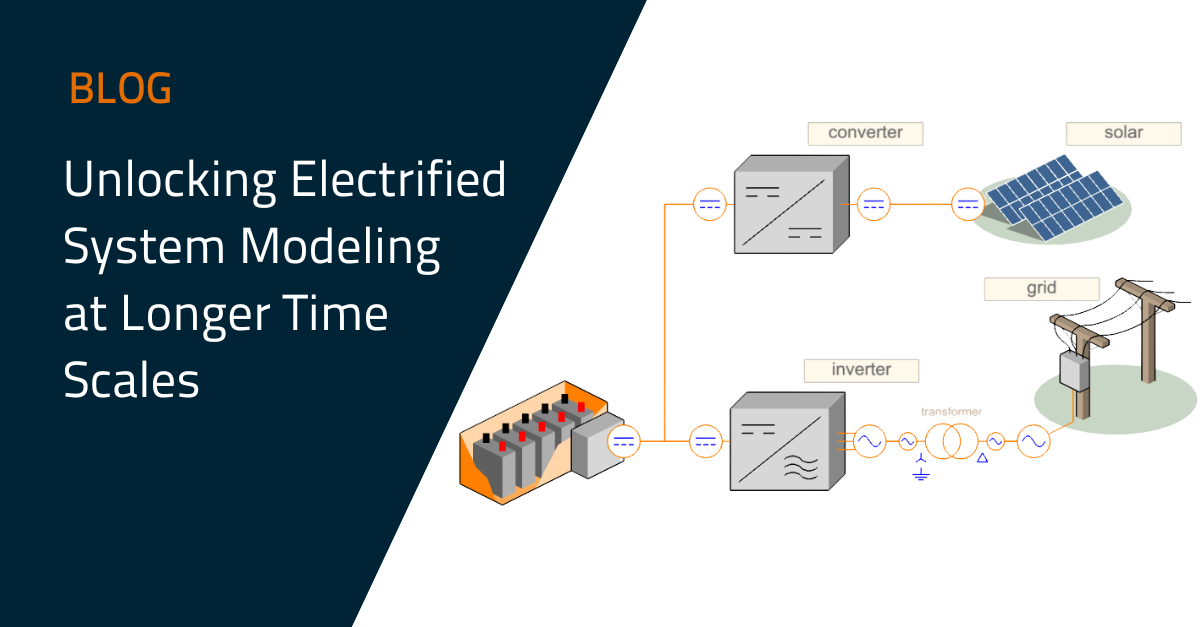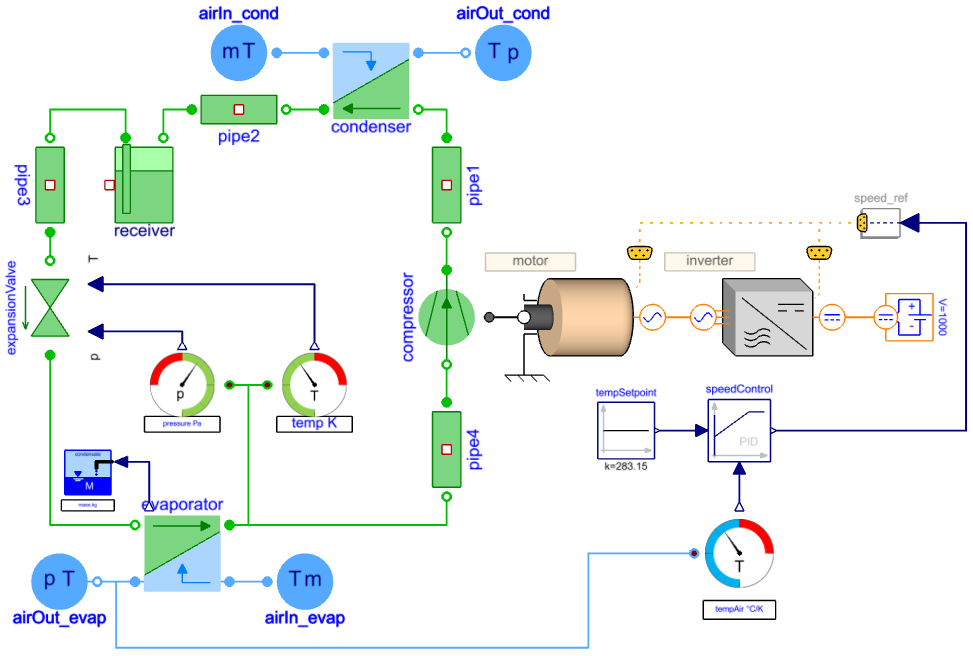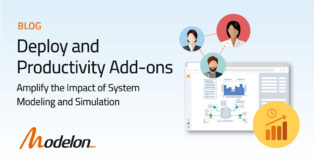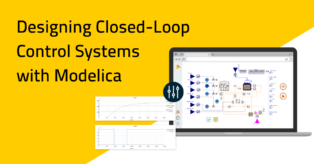Unlocking Electrified System Modeling at Longer Time Scales

Engineers designing electrified systems—from smart grids to electric vehicles—rely on simulation tools to validate performance, efficiency, and control strategies. There has often been a trade-off when simulating these systems: physics-based accuracy often meant short time horizons.
The computational expense of accurate circuit models meant that these were unavailable for studying longer real-world scenarios or for simulating combined electrical and thermo-fluid systems.
This is no longer a limitation with the latest version of Modelon Impact’s Electrification Library, which has unlocked the ability to simulate these systems over extended durations (many minutes and hours) with preserved accuracy of electric circuit models.
Faster Simulations of Systems with Electric Power Converters
Simulation performance will typically be a bottleneck for electrified systems due to differences in scale. The dynamics of the power electronics are so much faster than the time scales of the relevant operating scenarios. This is especially true when alternating currents (AC) are involved, such as in systems with inverters and rectifiers connected to the electric grid or driving electric motors.
Some examples where longer time scales are important include:
- Photovoltaics supplying the electric grid with slowly changing weather conditions
- Fuel cells with slowly responding thermo-fluid dynamics
- Variable speed compressors and their impact on overall thermal management
- Full-length drive cycles with electric vehicles

The latest version of Modelon Impact’s Electrification Library brings dramatic performance gains—in some cases, up to 100x faster simulations compared to previous versions of the library—using models that adapt the level of detail to match the relevant time horizon.
This has unlocked the ability to ask and answer a big set of engineering questions, over the full range of relevant time scales, with the same tool and model structure that was previously only available for shorter scenarios.
Some of the typical engineering questions related to power electronics include:
- What is the range of operating points for the expected real-world scenarios?
- Are there any scenarios where the component limits are reached? (electrical, thermal, software)
- Is the control implementation robust to disturbances and failure events?
- Will there be any dynamic issues when these electrical components are integrated into a larger multi-domain system?
Why A Low-Fidelity Model Doesn’t Mean Low Accuracy
Adjusting model fidelity always comes with trade-offs. A common way to achieve fast performance is to rely on empirical models. But this also means we lose information about the physics, making it challenging to use component data directly, and valid results can only be ensured for operating conditions where we have data.
With our new low-fidelity models, we have taken a different approach: We scale down the frequency content. The key is that it is not relevant to resolve, e.g., 50 Hz sinusoid waveforms, if we study a scenario that is several hours long. With these models, we can reduce the resolution to get good performance, while still capturing the same results on average as the more detailed models.

These are compatible models on a fidelity spectrum, which makes it easy for engineers to adapt the detail to the relevant timescale. They can zoom in to study rapid transient events and waveforms measured in milliseconds or zoom out to study slow trends over operating cycles measured in minutes or hours, while staying in the same modeling paradigm, re-using the same parameters and controllers.
Leveraging Multi-Fidelity for Multi-Domain Simulations
Electrified systems are inherently multi-domain, spanning electrical, mechanical, thermal, and fluid dynamics. However, simulating these domains together can be computationally prohibitive if their time constants aren’t aligned.
This challenge is solved with the latest version of the Electrification Library, which allows engineers to adapt the frequency content of the electrical models to match the dynamics of the other physical domains.
This allows engineers to answer questions about integrated multi-domain systems that previously would have been unfeasible, for example:
- Validate the control of an electric motor and inverter for a variable speed compressor in an air conditioning system.
- Validate the robustness of the electric power supply for a fuel cell or electrolyzer.

This flexible model fidelity means that engineers can get the right fidelity for studying multi-domain behaviors of the larger system, but can also scale up the detail when they need to zoom in and study much faster electrical dynamics, using the same model structure in Modelon Impact.
Built for Engineering Impact
What makes these updates truly powerful isn’t just the improvement in simulation speed—it’s the ability to answer more of the right engineering questions more efficiently and confidently. Engineers can rely on physics-based modeling that remains accurate over extended, application-relevant time scales. They can simulate interactions across electrical, mechanical, thermal, fluid, and control domains, within a unified environment. The scalable fidelity of the models enables seamless transitions between high-detail and system-level representations with fewer types of models to maintain and easier validation. This flexibility provides insights supporting early-stage architecture decisions and detailed component-level validation, without the need to switch tools.
Whether you’re evaluating hybrid energy systems, power distribution architectures, or electric drivetrains, Modelon libraries give you the power to simulate confidently over the time scales that matter most.
Get Started Today
Ready to see how scalable simulation can transform your work?



